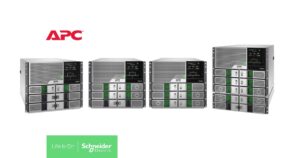The lifetime of a typical data center facility will span several generations of IT equipment. Therefore, data center planning – or lack of it – can have a big impact on the effectiveness of the data center design.
Planning for future loads, even in a new data center, is critical. Trends such as big data, AI, and machine learning are all driving up IT load requirements. Insufficient power and cooling capacity to support these loads can lead to loss of revenue, reduced productivity, and an unacceptable customer experience.
We believe a stepped, phase-in approach to data center capacity planning is best.
The first step is understanding the initial IT load power requirements (i.e., the power needs of the servers, storage, networking devices). Then an incremental buildout strategy is established, based on expected expansions of the IT load.
The methodology involves generating a careful future estimation of the maximum and minimum possible final IT load. The ramp-up time to reach the final IT load must also be understood. From this information, a statistically “expected” load can be estimated.
Such an approach considers both the capacity of the power infrastructure required to supply power to the load and the volume of cooling required.

“Stepped Phase-In” Planning Cost Benefits
The stepped phase-in approach allows power and cooling capacity to grow with the IT load, avoiding the capital and operating expense (including energy cost and maintenance) of equipment that is not yet needed.
New cloud-based data center infrastructure management (DCIM) tools can help facilitate the implementation of such an approach.
By correlating power, cooling, and space resources to individual servers, these tools proactively provide real-time awareness of the IT load and the remaining power and cooling capacities.
At each point in your growth strategy, there’s an opportunity to re-evaluate whether future growth is still necessary.
By scaling capacity over time instead of building for the final projected capacity upfront, we see the following benefits:
- Reduction in energy costs – The electric bill is a powerful incentive to deploy capacity planning best practices. When energy cost was low, it was often a matter of pride and preparedness to have a data center with lots of spare power and cooling capacity to “handle anything.” But today, with a stressed energy supply and rising costs, excessive capacity drives up both operating expenses and carbon footprint.
- Avoidance of unused capacity – In most cases, a data center will never reach the maximum load it was originally planned for. This means the data center will spend the entirety of its life-supporting costly excess capacity. A stepped phase-in approach mitigates this risk of installing capacity that will have to be paid for but never used.
- Reduction in maintenance cost – Installed equipment must be maintained and repaired even if the capacity is unused. By installing only what is needed to support the current load, significant service expenses can be avoided – there is no service expense for equipment you don’t have.
Tools to Use When Managing Data Center Capacity Planning
New cloud-based DCIM tools help safely and efficiently maximize power, cooling, and space capacities. Such tools can enhance the availability of the physical infrastructure systems and IT workloads they support.
These tools simplify and automate many data center management activities, allowing data center professionals to focus on other issues and tasks.
To learn more about how growth planning strategies can be successfully implemented, download our White Paper 143, Data Center Projects: Growth Model.
Also, try the Data Center Capacity & Growth Planning Calculator to help analyze key business parameters, make tradeoffs, and determine the best deployment strategy.



